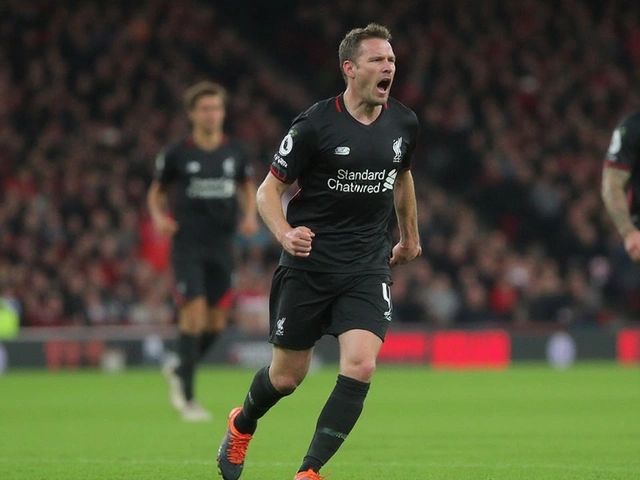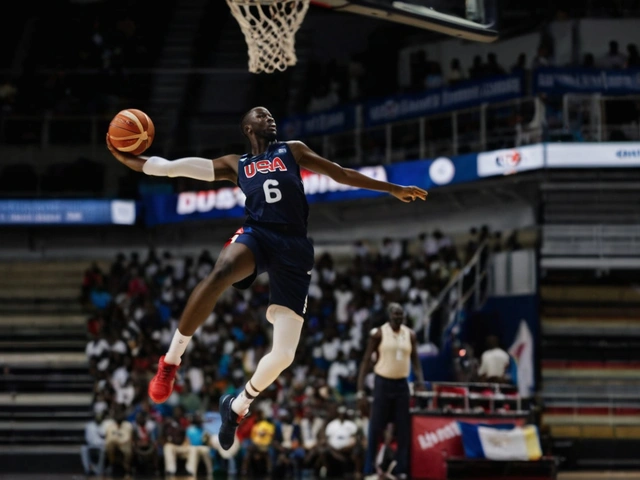Liverpool Triumphs Over Man City: Team News, Changes, and Key Performances
Mar 11 2025
When talking about Fluminense, a Rio de Janeiro‑based club founded in 1902 that has won multiple national titles. Also known as Flu, it competes in Campeonato Brasileiro Série A, the top tier of Brazilian football and plays its home matches at Maracanã Stadium, the iconic 78,000‑seat arena shared with several Rio clubs. These core elements shape the club’s identity and set the stage for everything that follows.
Fluminense isn’t just a name on a jersey; it’s a breeding ground for talent that fuels the Brazil national team. The club’s academy has produced stars like Romário, Carlos Alberto and more recently, Marcelo Cercas. This pipeline illustrates the triple: Fluminense nurtures players, players represent Brazil, Brazil shines on the world stage. The club’s philosophy emphasizes technical skill and attacking flair, traits that echo throughout the Brazilian football scene.
The Maracanã isn’t merely a stadium; it’s a cultural landmark. Hosting World Cup finals and countless concerts, it offers Fluminense a massive platform to showcase its style. The venue’s size and acoustics amplify fan chants, turning every home game into a spectacle. The relationship can be summed up as: Fluminense plays at Maracanã, Maracanã amplifies Fluminense’s presence, presence fuels club pride.
Rivalries give football its drama, and Fluminense’s fiercest is the Fla‑Flu derby against Flamengo, another Rio powerhouse with a massive fan base. Matches between the two ignite the city, influence league standings, and often decide who claims the bragging rights of Rio de Janeiro. The derby demonstrates another semantic link: Fluminense competes with Flamengo, competition fuels fan passion, fan passion fuels club revenue.
Beyond the derby, Fluminense also chases silverware in tournaments like the Copa do Brasil and the South American Libertadores. Recent runs in the Copa do Brasil have shown the squad’s depth, while a Libertadores appearance signals continental ambition. These quests embody the triple: Fluminense enters cups, cups test squad depth, depth drives future success.
Supporters, known as the Tricolores, bring a unique vibe to every match. Their green‑white‑maroon scarves, rhythmic chants, and community projects create a bond that stretches beyond the pitch. This fan culture means: Fluminense inspires fans, fans support the club, support sustains club growth. Such a cycle keeps the club financially stable and socially relevant.
Ownership and sponsorship have evolved, with recent investments focusing on modernizing training facilities and expanding digital outreach. By leveraging social media and streaming platforms, Fluminense reaches younger audiences worldwide, turning local loyalty into global recognition. This business angle reflects the link: Fluminense invests in tech, tech expands reach, reach boosts brand value.
All these pieces—history, stadium, rivals, youth development, cup runs, fan culture, and business strategy—form a comprehensive picture of what Fluminense stands for in Brazilian football today. Below, you’ll find a curated mix of news, analyses, and match previews that tie directly into these themes, offering deeper insight into the club’s current journey and its impact on the sport.
Fluminense host Juventude at Maracanã on Oct 16, 2025, with betting odds favoring a two‑goal win. The match could decide Libertadores spots and relegation hopes.

Mar 11 2025

Dec 17 2025

Jul 21 2024

Sep 24 2024

Jul 29 2024